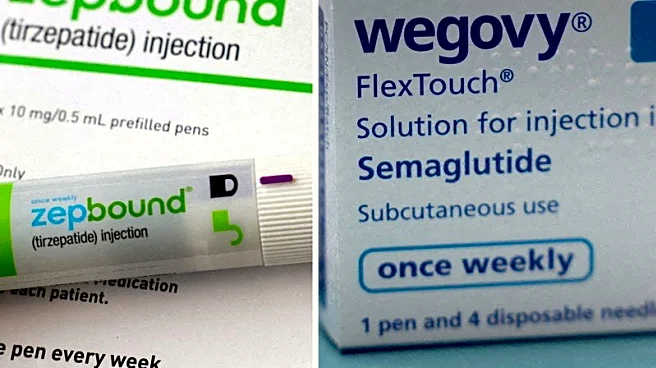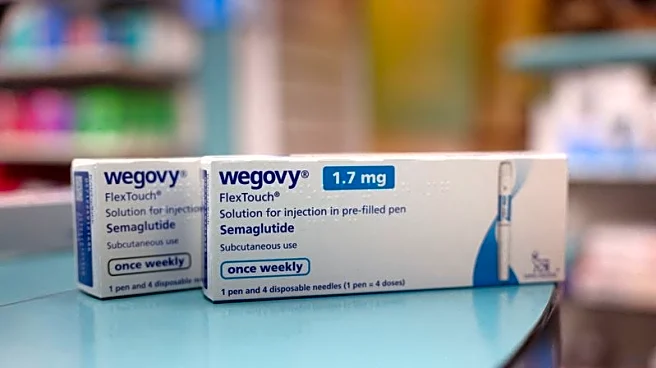What's Happening?
A recent clinical trial has demonstrated that orforglipron, a GLP-1 receptor agonist in pill form, is as effective as injectable semaglutide (Ozempic) for weight loss in individuals with type 2 diabetes.
Conducted over 72 weeks across 136 sites in 10 countries, the study involved 1,613 participants diagnosed with type 2 diabetes, all classified as overweight or obese. Participants were divided into four groups, with one receiving a placebo and the others receiving varying doses of orforglipron. The highest dose group experienced an average weight loss of 9.6 percent, comparable to the 10-15 percent loss seen with injectable semaglutide. The trial also noted improvements in blood sugar, heart, inflammation, and blood pressure markers. Side effects were similar to those of injectable GLP-1 drugs, including nausea and diarrhea. The study was funded by Eli Lilly and published in The Lancet.
Why It's Important?
The development of orforglipron as an oral medication could significantly impact the treatment landscape for type 2 diabetes and obesity. Currently, GLP-1 drugs like semaglutide are only available via injection, which can be a barrier for some patients. An effective oral alternative could improve accessibility and adherence to treatment, potentially leading to better health outcomes. Additionally, orforglipron is expected to be available at a lower cost than current injectables, which could make it more accessible to a broader population and increase insurance coverage. This could position orforglipron as a pivotal treatment option, akin to metformin in diabetes management, and help address the growing obesity epidemic.
What's Next?
Orforglipron is anticipated to receive FDA approval and become available in 2026. Its introduction could shift treatment paradigms by providing a more convenient and cost-effective option for weight management in diabetes patients. Healthcare providers and insurance companies may need to adjust their coverage and treatment guidelines to incorporate this new medication. Further studies may explore its long-term efficacy and safety, as well as its potential use in non-diabetic populations struggling with obesity.













